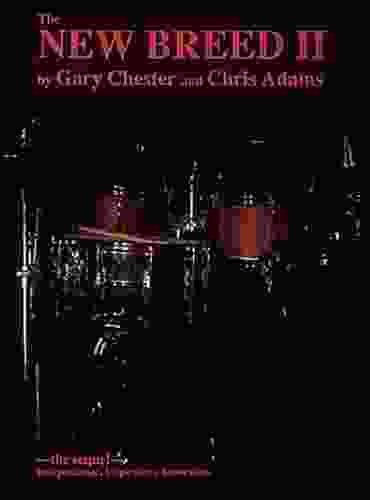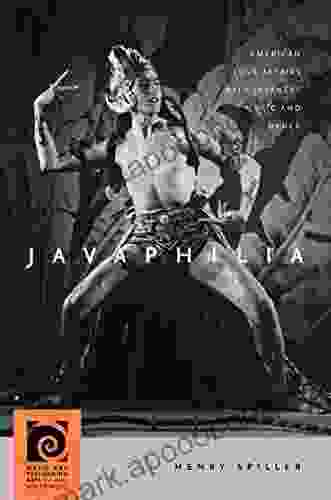The Enduring American Love Affair With Javanese Music and Dance

For centuries, Americans have been captivated by the beauty and allure of Javanese music and dance. From the early days of colonialism to the present day, Javanese performing arts have left an indelible mark on American culture.
5 out of 5
| Language | : | English |
| File size | : | 5086 KB |
| Text-to-Speech | : | Enabled |
| Enhanced typesetting | : | Enabled |
| Print length | : | 282 pages |
| Screen Reader | : | Supported |
The first Americans to encounter Javanese music and dance were missionaries and traders who traveled to the Dutch East Indies (now Indonesia) in the 19th century. These early visitors were amazed by the intricate melodies and rhythms of Javanese gamelan music, and by the graceful and expressive movements of Javanese dancers.
In the early 20th century, Javanese performing arts began to gain popularity in the United States through the work of American composers and musicians such as Henry Cowell and Colin McPhee. Cowell was particularly interested in the use of non-Western instruments and scales in his compositions, and he incorporated Javanese gamelan into many of his works.
McPhee was a composer, ethnomusicologist, and filmmaker who spent many years studying Javanese music and dance in Indonesia. He wrote several books and articles about Javanese performing arts, and he also made a number of recordings of Javanese gamelan music. McPhee's work helped to introduce Javanese music and dance to a wider audience in the United States.
In the post-World War II era, Javanese music and dance continued to grow in popularity in the United States. American universities began to offer courses in Javanese music and dance, and a number of American gamelan ensembles were formed. These ensembles performed at concerts, festivals, and workshops throughout the United States, and they helped to spread the appreciation of Javanese music and dance to new audiences.
Today, Javanese music and dance are an established part of the American cultural landscape. Gamelan ensembles can be found in cities and towns across the United States, and Javanese dance companies regularly perform at major arts festivals. Javanese music and dance have also been incorporated into a variety of American popular music and dance forms, from jazz to hip-hop.
What is the appeal of Javanese music and dance?
There are many reasons for the enduring American love affair with Javanese music and dance. First, Javanese music and dance are simply beautiful. The melodies are haunting and evocative, and the rhythms are complex and hypnotic. The dance movements are graceful and expressive, and they tell stories of love, loss, and longing.
Second, Javanese music and dance are exotic. They come from a culture that is very different from our own, and they offer a glimpse into a world that is both fascinating and mysterious. Javanese music and dance can transport us to a different time and place, and they can help us to understand a different culture.
Third, Javanese music and dance are participatory. They are meant to be enjoyed by everyone, not just by trained performers. Anyone can learn to play the gamelan or to dance the Javanese dances. This participatory aspect of Javanese music and dance makes them especially appealing to Americans, who value community and self-expression.
The future of Javanese music and dance in America
The future of Javanese music and dance in America is bright. These performing arts are continuing to grow in popularity, and they are now an established part of the American cultural landscape. Javanese music and dance will continue to be performed, taught, and enjoyed by Americans for generations to come.
5 out of 5
| Language | : | English |
| File size | : | 5086 KB |
| Text-to-Speech | : | Enabled |
| Enhanced typesetting | : | Enabled |
| Print length | : | 282 pages |
| Screen Reader | : | Supported |
Do you want to contribute by writing guest posts on this blog?
Please contact us and send us a resume of previous articles that you have written.
 Book
Book Novel
Novel Page
Page Chapter
Chapter Text
Text Story
Story Genre
Genre Reader
Reader Library
Library Paperback
Paperback E-book
E-book Magazine
Magazine Newspaper
Newspaper Paragraph
Paragraph Sentence
Sentence Bookmark
Bookmark Shelf
Shelf Glossary
Glossary Bibliography
Bibliography Foreword
Foreword Preface
Preface Synopsis
Synopsis Annotation
Annotation Footnote
Footnote Manuscript
Manuscript Scroll
Scroll Codex
Codex Tome
Tome Bestseller
Bestseller Classics
Classics Library card
Library card Narrative
Narrative Biography
Biography Autobiography
Autobiography Memoir
Memoir Reference
Reference Encyclopedia
Encyclopedia Sanjay Ghosh
Sanjay Ghosh Neil Kitching
Neil Kitching Sam Sax
Sam Sax William Langewiesche
William Langewiesche Lisa Darcy
Lisa Darcy Kenny Keller
Kenny Keller Ronny Herman De Jong
Ronny Herman De Jong Jana Deleon
Jana Deleon Jo Beverley
Jo Beverley Willis Barnstone
Willis Barnstone Robert Dinsdale
Robert Dinsdale Fred Colby
Fred Colby Mark Hatala
Mark Hatala Maureen Whitebrook
Maureen Whitebrook Loki Renard
Loki Renard Terry Kay
Terry Kay Eddie S Meadows
Eddie S Meadows Moshe Schein
Moshe Schein Helen Raleigh
Helen Raleigh Matt Lashley
Matt Lashley
Light bulbAdvertise smarter! Our strategic ad space ensures maximum exposure. Reserve your spot today!
 Grant HayesFollow ·17.4k
Grant HayesFollow ·17.4k Amir SimmonsFollow ·5.7k
Amir SimmonsFollow ·5.7k Victor HugoFollow ·6.3k
Victor HugoFollow ·6.3k Ruben CoxFollow ·5.6k
Ruben CoxFollow ·5.6k Arthur Conan DoyleFollow ·8.3k
Arthur Conan DoyleFollow ·8.3k Fred FosterFollow ·12k
Fred FosterFollow ·12k Matt ReedFollow ·4.7k
Matt ReedFollow ·4.7k Mark TwainFollow ·9k
Mark TwainFollow ·9k

 Eugene Powell
Eugene PowellFat Cat Stories: Level At Word Family - A Purrfect Start...
Introducing the 'At'...

 William Powell
William PowellUnveiling the Treasures of Russian Poetry: The Cambridge...
Immerse yourself in the...

 Roberto Bolaño
Roberto BolañoUnveiling the Treasures of Beowulf: A Guided Tour with...
: Delving into the...

 Foster Hayes
Foster HayesTransport, Climate Change and the City: Tackling Urban...
Transport is a major...

 Calvin Fisher
Calvin FisherHow To Make It In The Music Industry: The Ultimate Guide...
Are you an aspiring musician with...

 Rick Nelson
Rick NelsonUnveiling the Enigmatic World of Gary Chester's "The New...
Step into a World...
5 out of 5
| Language | : | English |
| File size | : | 5086 KB |
| Text-to-Speech | : | Enabled |
| Enhanced typesetting | : | Enabled |
| Print length | : | 282 pages |
| Screen Reader | : | Supported |












